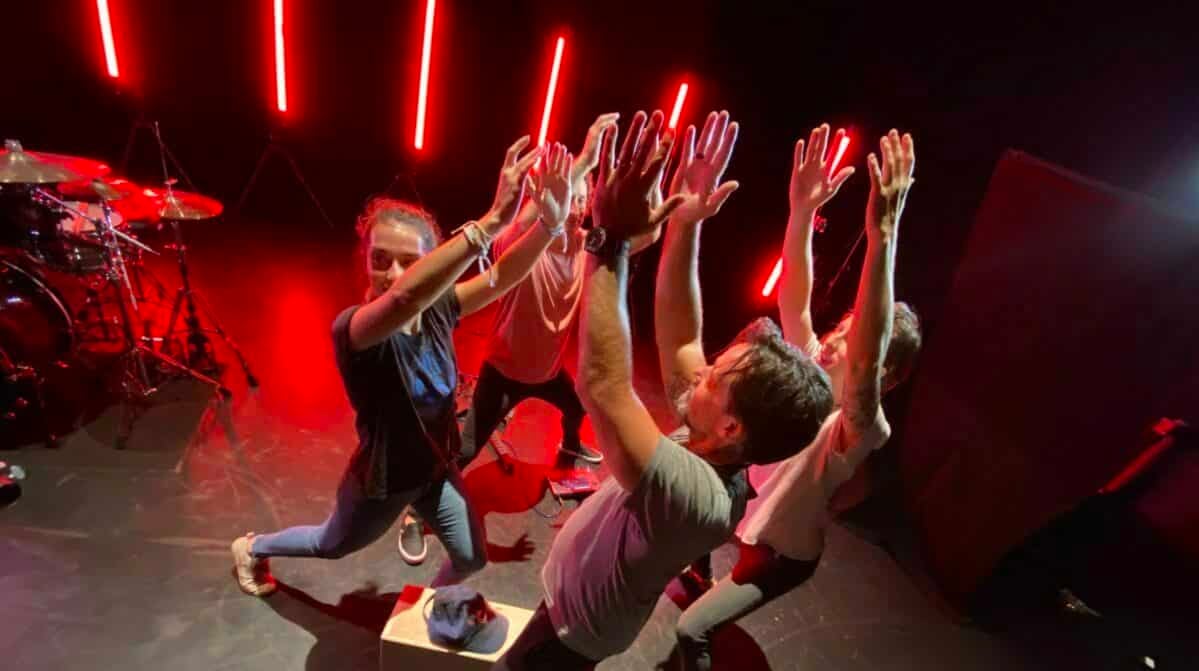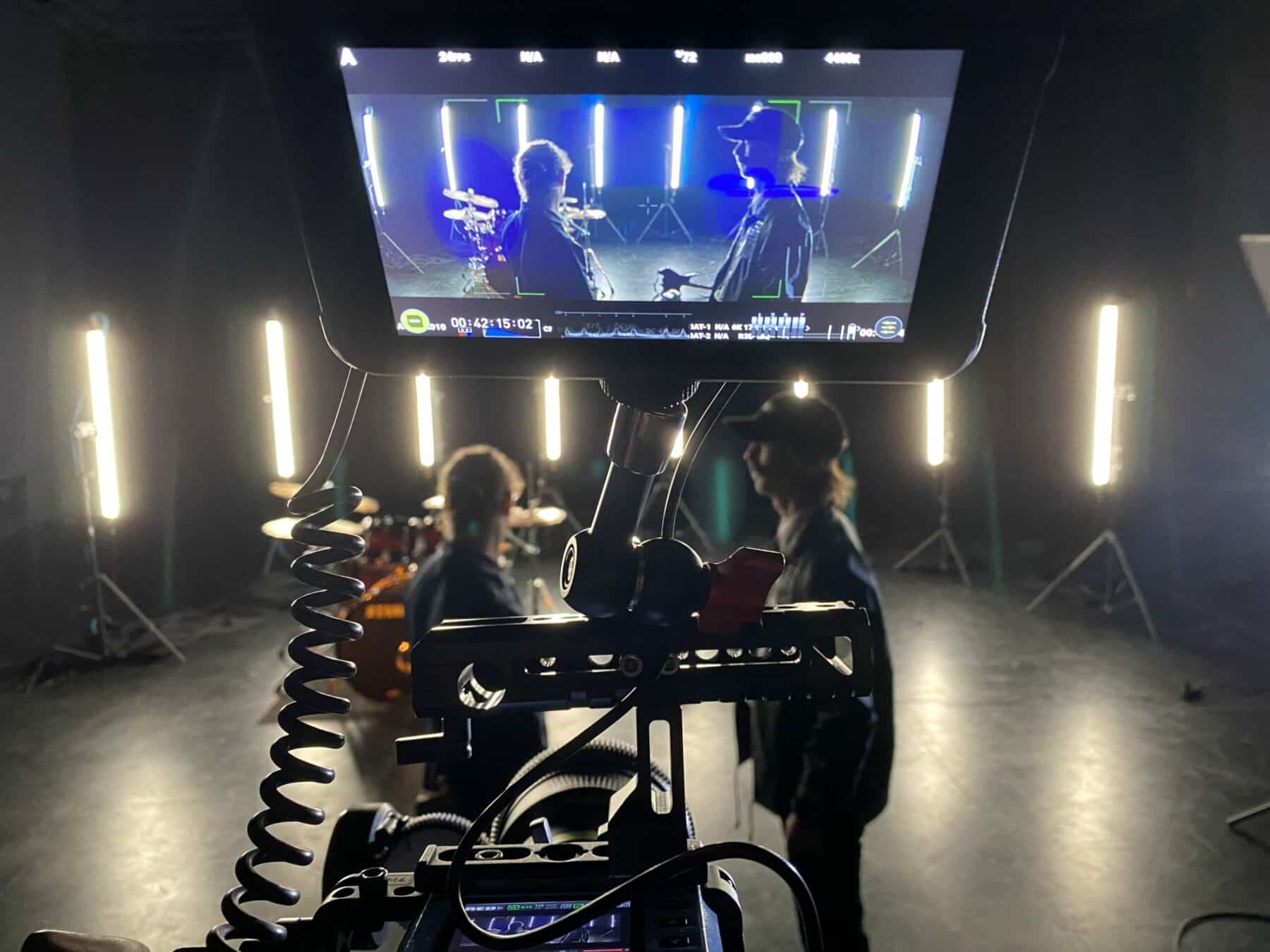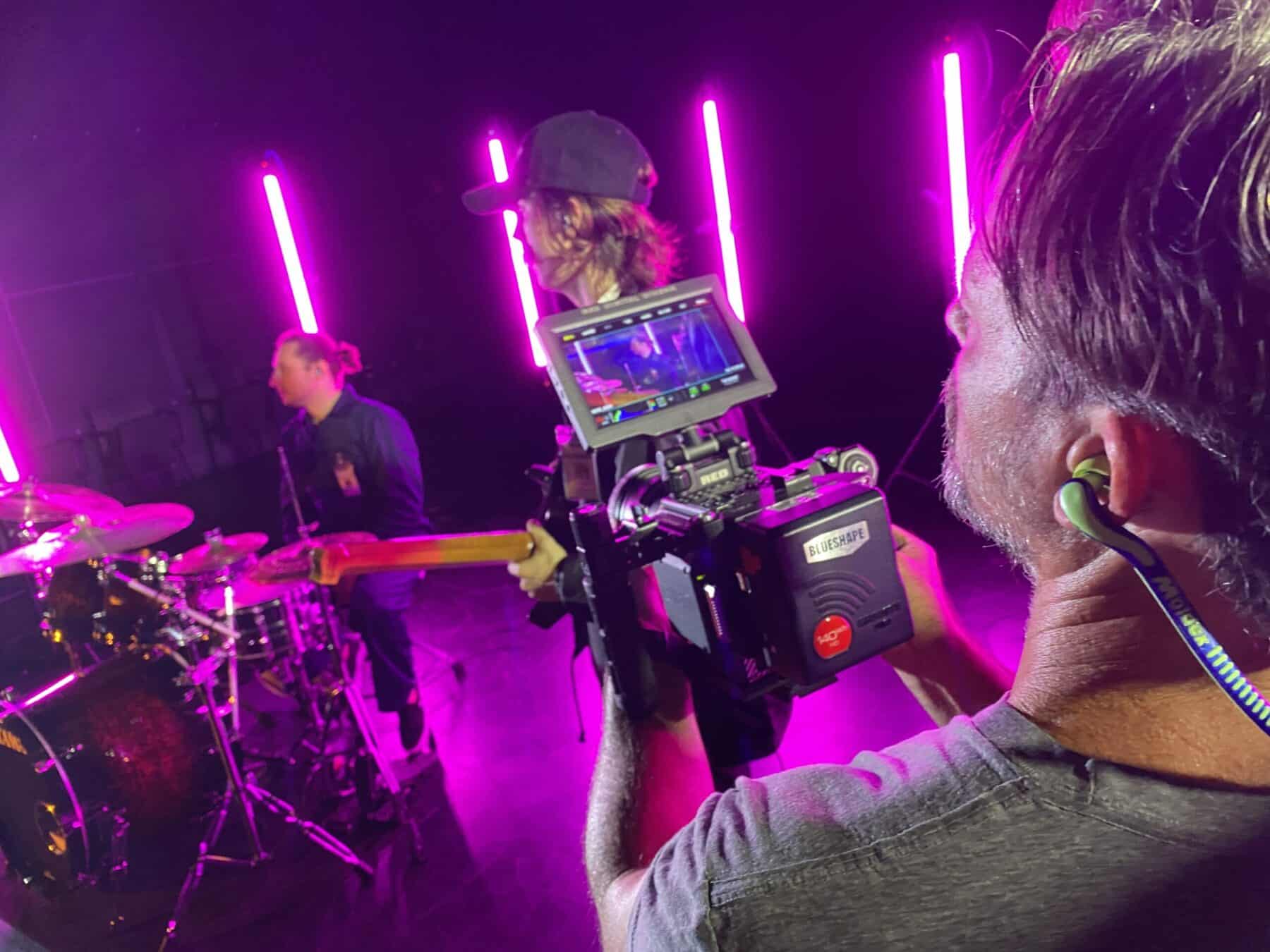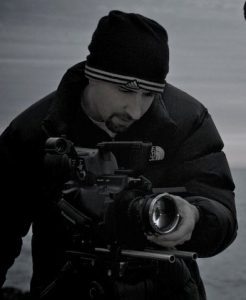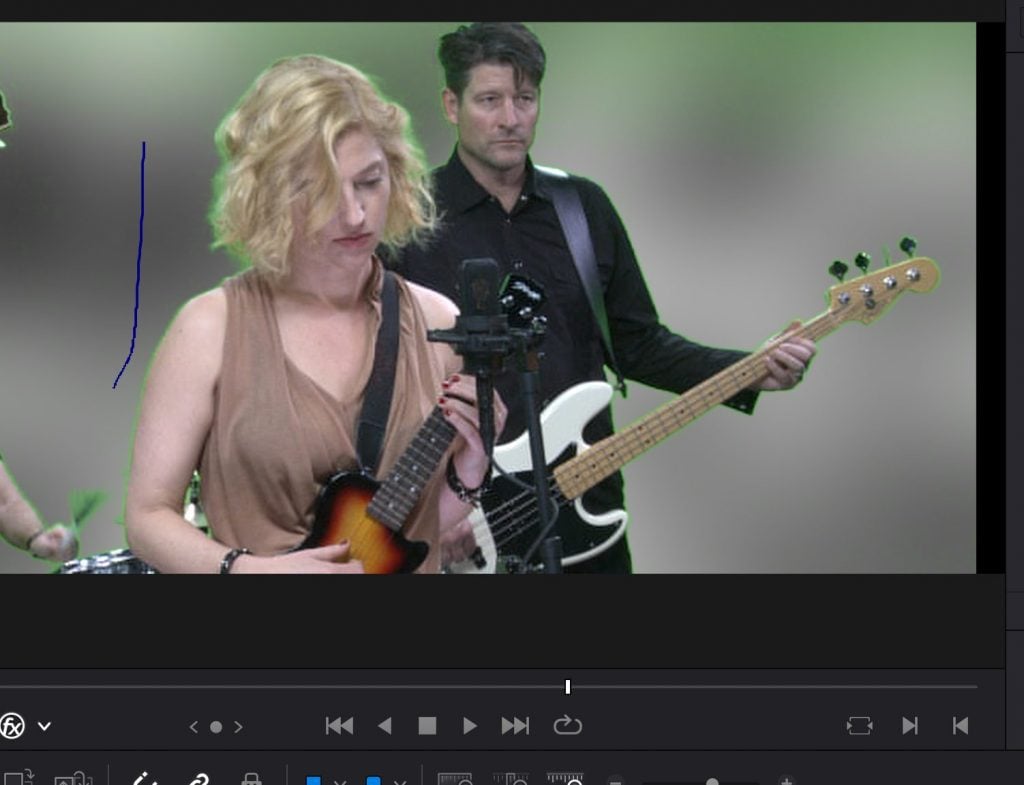Top Photo: Crowd time! Making five people look like a crowd of applause for the opening shots takes teamwork.
MAKING VISUALS SING
Written By John Klein
Every indie filmmaking conversation tends to start with some variation of “write what you have.” So, when I signed on to direct the music video for Kinglet’s lyric-less prog-rock funky guitar song, “Woodpecker,” I took that notion to heart, writing a concept of two late-night workers who find new life in a strange music broadcast. It would feature only the two band members Ryan Taylor and Kendall Lantz, and would only take place in one location (in our case, the black-box Philbin Theater and the basement of the University of Notre Dame’s Debartolo Performing Arts Center) and could be shot with as few as two to three crew members!
With those tight limitations, frequent collaborator William Donaruma and I relied on several elements to heighten the cinematography and production value of the video.
Anamorphic lenses.
In truth, any lenses that can give a little extra visual character will help! For our micro budget, we went with SLR Magic’s 1.33x anamorphics, full of odd distortions and aberrations. The bright blue horizontal flares were key to the unique look of the video. We always had a light brought in just off-frame to force them into each shot, and affectionately called it “the JJ” for director JJ Abrams’s noted love of lens flares.
Dynamic lighting.
Movement, rhythm, and contrast are key in a music video. We mixed hard and soft light throughout, and we were lucky enough to procure a complement of Quasar tubes, which we mounted vertically onto light stands surrounding the performance, and linked them via CAT-5 cables. Ryan in turn wrote a program of shifting colors linked to the beat of the music, so we could edit between shots and keep the color consistent throughout the song.
Camera movement.
Lots of videos rely on gimbals; given the weight of our camera system, we instead opted to stay on a Dana Dolly for just about every single shot that wasn’t handheld, sometimes for quick repeating moves as short as a few feet. Every bit of motion gave an extra layer of parallax, especially with the lights in the background and the lens flares moving in and out. And we kept it consistent for the story, using simple symmetrical in-and-out motions during the early portions of the song and more diagonal and side-to-side motions for the performances as the characters come alive.
Lots of coverage.
In a music video, editing is paramount, which means shooting as many options for cutting on the beat as possible. Sometimes it’s as simple as a punch in, sometimes a slight tweak of a camera angle (always high or low), sometimes even multiple takes of the same shot with minor variations – jump cuts are more than forgivable in a music video, and even encouraged!
Color and contrast.
So much cinematography lately goes to the bleak and washed-out end of the spectrum, and we didn’t want to be afraid of saturation and deep contrast! Tony Scott’s work wound up being a great reference for us – we wanted a reversal stock kind of look, and just decided to go for it.
All this, plus some wicked screen compositing work from Ryan (which made a long-distance cameo from guitar soloist Jake Howsam Lowe possible), gave our little music video a lot of oomph, befitting the song’s rock-out feel. And it goes to show, as it always does in indie film, that you can do a lot with a little!
View the music video, which played at Dances With Films, here: https://www.youtube.com/watch?v=9kk2lMKUjl8.
Pictured: Our characters, lit by an array of Quasar tubes, fulfill their dreams in small-screen glory.
Pictured: Co-cinematographer William Donaruma frames up a slo-mo handheld shot of the band on the Epic-W.
John Klein (www.windycitycamera.com) is a professor of digital media at Elmhurst University, as well as a cinematographer, director, and writer who produces under the banner of his production company Glass City Films.


